Products
Industries
Power input criteria: Three-phase AC415V 50Hz
Structural features: The main unit adopts flat and vertical type
Dimensions: Length 600mm× width 500mm× height 1330mm
The ambient temperature shall: not be less than-30℃; not more than + 45℃
The relative humidity of the air: not less than 15% and not higher than 90%
Application Industry: Surface treatment, including tin plating and other related processes.
Electroplating is a widely used surface treatment technique in the surface treatment industry that involves depositing a thin metal or alloy layer onto a substrate through electrolysis. This electroplating process improves properties like wear resistance, conductivity, reflectivity, and corrosion resistance, while enhancing aesthetics. Common electroplating methods include copper, nickel, gold, palladium-nickel, tin-lead, silver, zinc, ABS, and chrome plating. Key components of electroplating include the cathode (the item being plated), the anode (either the metal to be deposited or an insoluble anode), a solution with metal ions, a tank, and a rectifier providing DC power. High Frequency Switching Power Supplies are essential for efficient operation, stable output, and customizable waveforms, making them invaluable in the surface treatment industry.
The installation cabinet is equipped with 4 TBFBZ-200A/6V units, and the conversion card controls all the rectifier power supplies. This electroplating technique is crucial in industries like automotive manufacturing, where it serves both functional and visual purposes. Electroplating is also applied to ABS materials for improved durability and appearance, as well as in PCB electroplating for metals like copper, nickel, and chromium. High Frequency Switching Power Supplies drive efficiency and precision across these electroplating processes in the surface treatment industry.
The Plating Rectifier Equipment series of electroplating rectifiers is extensively utilized for a variety of surface treatments, including PCB electroplating, hard chrome coating, as well as plating with copper, nickel, zinc, gold, and silver, among other hardware surface treatment applications.
1)Field application diagram:
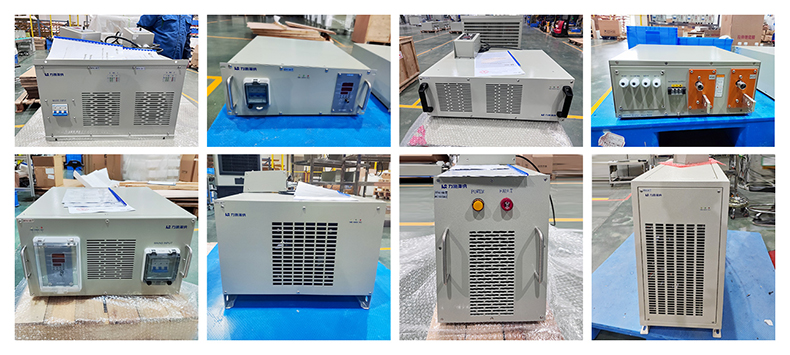
2)Industry application examples:
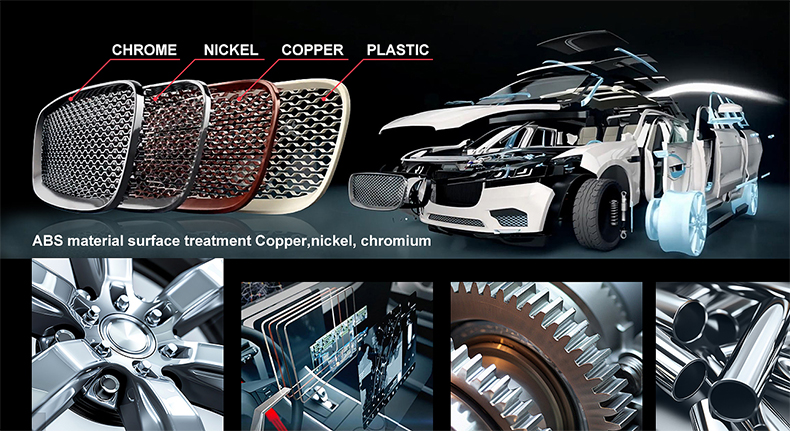
Characteristics of an electroplating rectifier:
› Excellent Energy-Saving Effect:
The rectifier is designed to operate efficiently, converting incoming AC power into DC power with minimal energy loss. This leads to significant savings in electricity consumption, which can be particularly beneficial for large-scale electroplating operations that require continuous power supply.
› High Output Stability:
The rectifier is capable of maintaining a constant and stable DC output voltage and current, even under varying load conditions. This ensures consistent and uniform plating thickness, which is crucial for achieving high-quality electroplating results.
› Flexible Output Waveform Modulation:
The output waveform of the rectifier can be easily modulated to suit different electroplating processes and requirements. This includes adjusting the pulse width, frequency, and duty cycle of the output waveform, which can optimize the plating efficiency and quality for specific applications.
› Ease of Waveform Modulation:
In addition to flexibility, the rectifier is also designed for ease of waveform modulation. Operators can quickly and accurately adjust the waveform parameters using intuitive controls or automated systems, allowing for precise control over the electroplating process.
Overall, these characteristics make the electroplating rectifier an essential tool for achieving high-quality, efficient, and energy-saving electroplating processes.
Enhance Wear Resistance, Conductivity, and Reflectivity: By depositing a thin layer of a harder or more conductive material onto the surface of an object, electroplating significantly improves its wear resistance, allowing it to withstand friction and abrasion better. It also enhances conductivity, particularly in electronic and electrical components, by providing a smoother and more uniform surface for the flow of current. Additionally, certain metals, such as silver and chromium, can improve reflectivity, making electroplated surfaces ideal for mirrors, reflectors, and other optical applications. Improve Corrosion Resistance and Enhance Aesthetics: By creating a barrier between the base material and the environment, electroplating protects the object from corrosive elements like moisture, oxygen, and chemicals, thereby extending its lifespan. Furthermore, electroplating can add a decorative finish to an object, enhancing its aesthetic appeal. Whether it’s the shiny chrome finish on car bumpers or the gold plating on jewelry, electroplating adds a touch of elegance and sophistication. In summary, electroplating serves a dual purpose: it not only enhances the functional properties of an object but also improves its appearance and extends its durability.
› Copper Plating:
Purpose: Primarily used as a primer to enhance adhesion of subsequent plating layers and improve corrosion resistance.
Considerations: Copper is prone to oxidation, which forms copper oxide (copper green) that loses conductivity. Therefore, copper-plated products must undergo copper protection treatments.
› Nickel Plating:
Purpose: Used as a primer or for aesthetic purposes to enhance corrosion resistance and wear resistance. Chemical nickel plating is a modern process that offers wear resistance comparable to chrome plating.
Considerations: Note that many electronic products, such as DIN heads and N heads, no longer use nickel as a primer due to its magnetic properties, which can affect the electrical performance and passive intermodulation inside the device.
› Gold Plating:
Purpose: Improves conductive contact impedance and enhances signal transmission.
Considerations: Gold is highly stable but also the most expensive option.
› Palladium-Nickel Plating:
Purpose: Improves conductive contact impedance and enhances signal transmission. Offers better wear resistance than gold.
Advantages: Combines the benefits of palladium’s corrosion resistance and nickel’s hardness.
› Tin-Lead Plating:
Purpose: Improves soldering ability.
Considerations: Due to concerns about lead content, tin-lead plating is being phased out and replaced by alternatives such as bright tin and mist tin plating.
› Silver Plating:
Purpose: Improves conductive contact impedance and enhances signal transmission.
Advantages: Silver offers the best electrical conductivity among these metals and is relatively resistant to oxidation, maintaining conductivity even after oxidation.
Considerations: While silver’s performance is excellent, its cost and tendency to tarnish over time should be considered.
the choice of plating type depends on the specific requirements of the application, including corrosion resistance, wear resistance, electrical conductivity, cost, and environmental considerations.
Cathode: The plated object, specifically referring to various connector terminals or other metallic surfaces that are intended to receive the electroplated coating. The cathode serves as the surface where the desired metal ions are reduced and deposited as a solid layer.
Anode: Depending on the type of electroplating process, the anode can be either soluble or insoluble.
Soluble anode: This is the metal that is to be plated onto the cathode. During the electroplating process, metal ions from the anode dissolve into the plating solution and are then plated onto the cathode.
Insoluble anode: In some cases, especially when using precious metals like white gold or iridium oxide, an insoluble anode may be used. This anode does not dissolve during the process but serves as a source of electrons for the reduction reaction that occurs at the cathode.
Plating Solution: This is a solution that contains ions of the metal that is to be plated onto the cathode. The composition and concentration of the plating solution are crucial for achieving the desired plating properties, such as thickness, adhesion, and appearance.
Plating Tank: The tank that holds and stores the plating solution during the electroplating process. The tank must be able to withstand the corrosive effects of the plating solution and maintain a constant temperature to ensure consistent plating results. Strength, corrosion resistance, temperature resistance, and chemical compatibility are key considerations in selecting the material for the plating tank.
Rectifier: The equipment that provides the direct current (DC) power supply for the electroplating process. The rectifier converts alternating current (AC) from the main power supply into DC, which is then used to drive the electroplating reaction. The voltage and current output of the rectifier can be adjusted to control the rate of deposition and the thickness of the plated layer.
Additionally, other elements may also be involved in the electroplating process, such as filters to remove impurities from the plating solution, heaters to maintain the solution at a constant temperature, and stirrers to ensure uniform mixing of the solution.
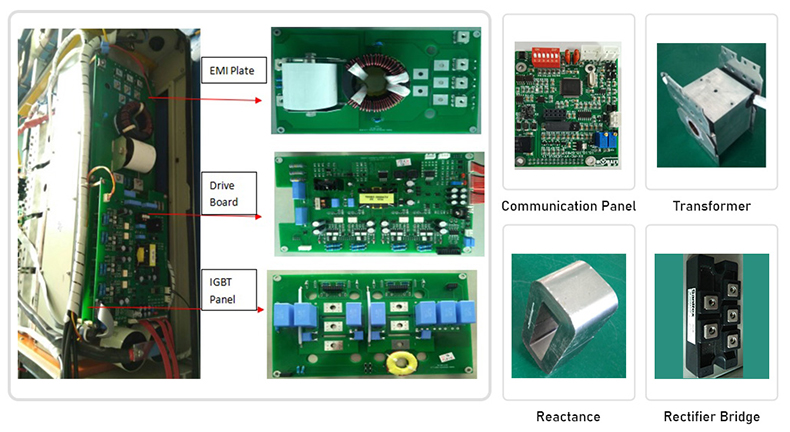
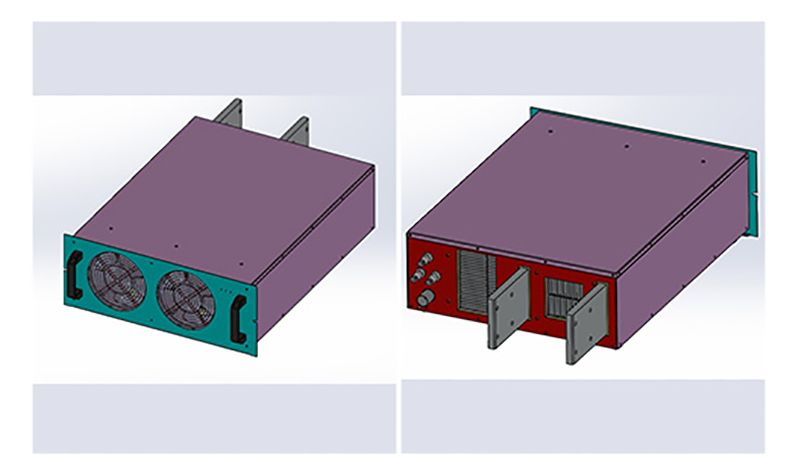
Air Cooling:Heat dissipation fan + air duct + comb heat sink
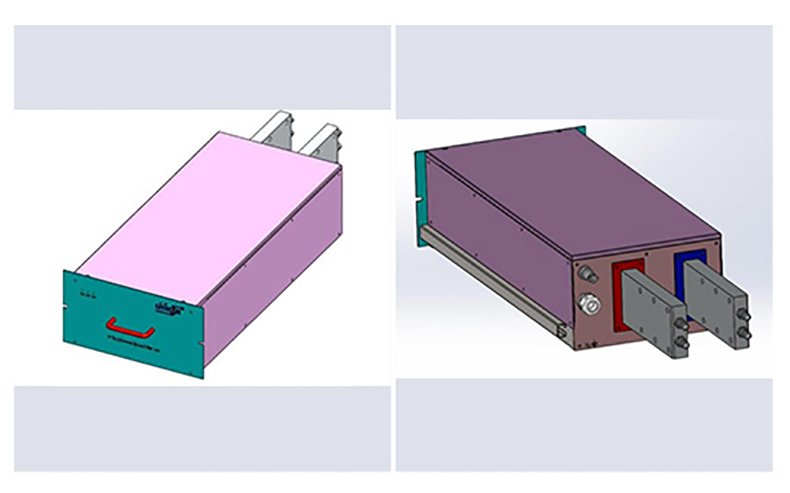
Water Cooling:Built-in water circulation line
Environmental conditions for normal use
› The sea dial shall not exceed 1500m
› The ambient temperature shall not be less than-30℃; not more than + 45℃
› The relative humidity of the air is not less than 15% and not higher than 90%
› The operation site has no conductive explosive dust and excess dust, and no gas or vapor that corrode metal or destroy insulation
› No violent vibration or impact, and the vertical inclination of the installation shall not exceed 5°
› Indoor use, and with good ventilation
Power input criteria:Three-phase AC415V 50Hz
Form factor
Structural features: The main unit adopts flat and vertical type
Dimensions: Length 600mm× width 500mm× height 1330mm
Panel introduction
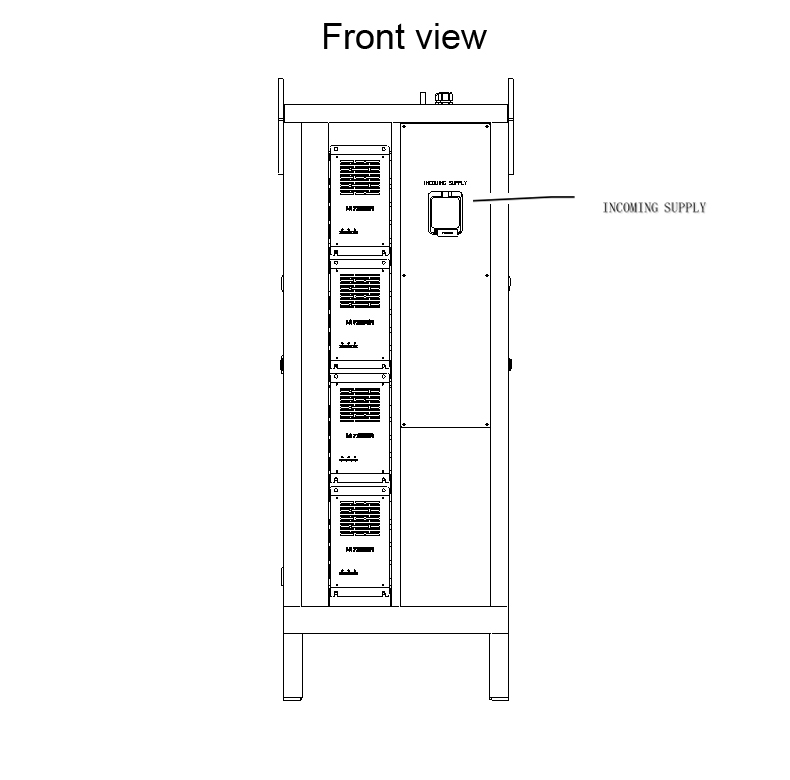
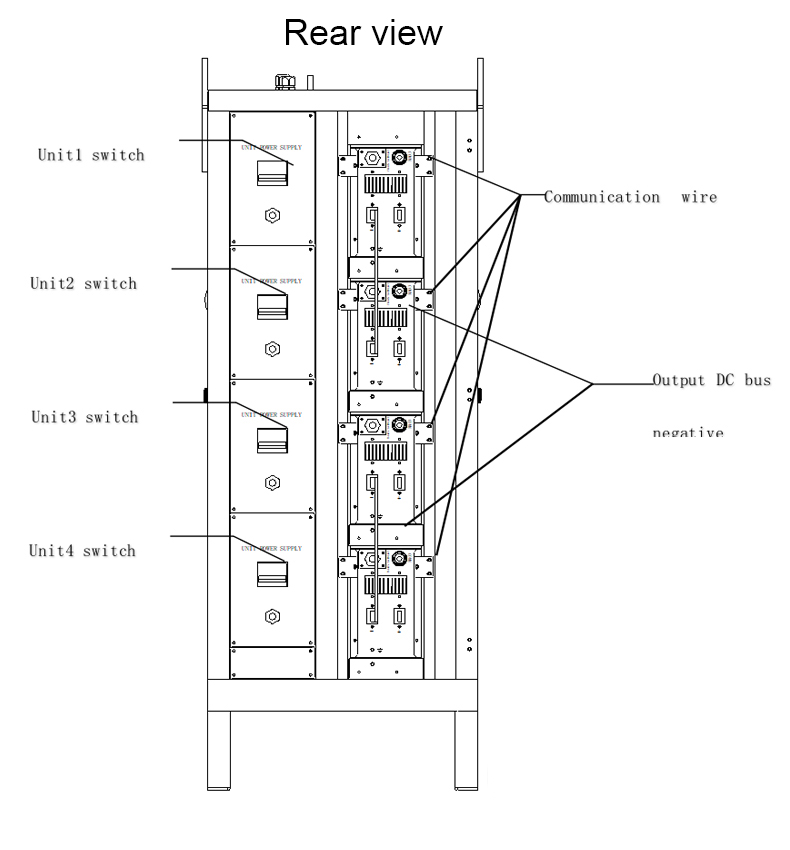
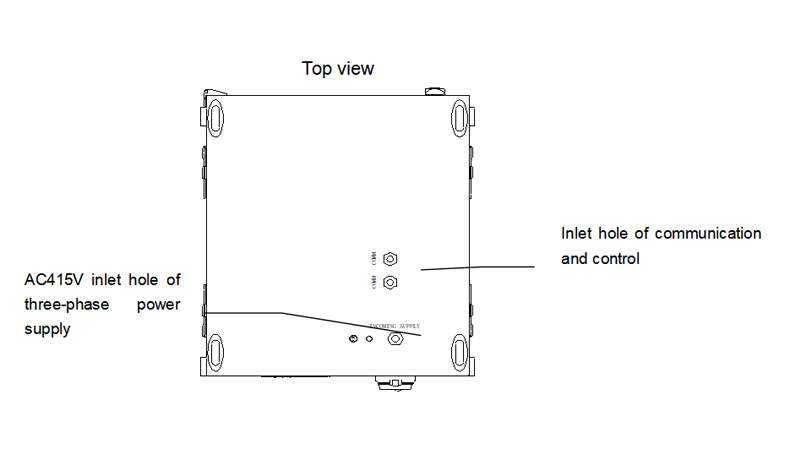
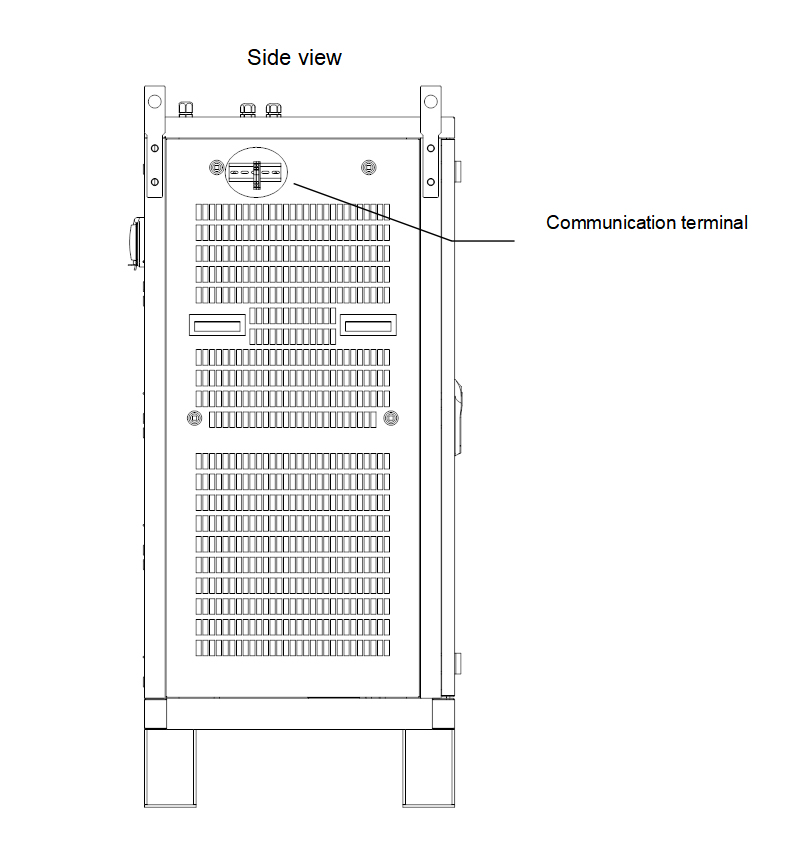
Power cord specifications
Red copper wire is used in the power line, and the copper wire specification is shown below:
| Wire marking | Specification of power cord |
| U | 1.5mm2 |
| V | 1.5mm2 |
| W | 1.5mm2 |
| PE | 1.5mm2 |
Introduction to signal terminals
Description of aviation plug terminal on power supply rear panel
| No. | Terminals | Terminal Descriptions |
| 1 | A1 | A1 and B1 are the network communication signals of RS485 |
Liyuan will keep up with the world’s latest technology closely, and uphold the concept of providing customers with high-quality power supplies and professional integrated services.
With advanced design and rich experience in rectifier manufacturing, we will provide the best power solutions as well as the most stable and efficient power supply for users both at home and abroad.
LIYUAN rectifier is the most competitive brand in China
Company relies on strong technology research and development cooperation basis, created a number of advanced technology, in recent 3 years amounted to more than 30 to apply for a patent, which has nearly 10 patents of invention.
Equipped with the national electric power transformation and control engineering technology research center (branch), and has set up a loan enterprise academician workstation.
Strict implementation of ISO quality management system, and through the CE safety certification, has been implementing ERP management for many years, to achieve the network, systematic computer control, the formation of a standard, efficient modern management system.
Liyuan adhere to innovation and the continuous improvement of power conversion efficiency and product quality.
The increasing R&D investment every year, and cooperation with China’s well-known universities, we has established the research center of national electric power conversion and control engineering technology.
Especially the related core patents of high-power synchronous rectifier power supply, stay ahead of the whole industry in China.
The ISO 9001 quality management system has been fully implemented in Liyuan, including quality inspection of components in warehouse, production process inspection, and final product inspection.
We adopt advanced scientific quality management system and the most stringent testing methods in the whole process to ensure the stability and reliability of products.

› Packing
1)Small size rectifier packing in carton box separately.
2)Large size rectifier will be packed in wooden case.
3)We guarantee that all the packing is intact when it reaches its destination.
› Shipping
1)30-45 Days after payment.
2)Transport: DHL, FEDEX, UPS, Air shipping, Boat shipping
3)You may choose our shipping partner or your own partner.
› Maintenance
We are pleasant to share our theory and experience on equipment maintenance with users.
We are pleasant to interact with users to collect their tips and know-hows on equipment maintenance.
The module “Maintenance” here is intended to help users solve various problems they possibly encounter during equipment maintenance…
If you need other power electroplating rectifiers, we can custom design them according to customer requirements. Please contact us.
Are you looking for 4×TBFBZ-200A/6V Power Supply Cabinet? Liyuan Haina Group is one of the professional manufacturers and suppliers in this field. With over 27 years of focus on R&D, design, production, sales, and technical services for industrial rectifiers, we have already exported our products to the United States, Canada, Britain, Portugal, Italy, Thailand, Spain, South Africa, Russia, the UAE, Japan, South Korea, Malaysia, and other parts of the world. Equipped with a productive factory, we warmly welcome you to purchase our high-quality, Made-in-China products at competitive prices or try our customized service.
Hot Tags:4×TBFBZ-200A/6V Power Supply Cabinet, surface treatment industry, Tin Plating Rectifier
![]() File Download
File Download
If you have more questions, please leave us a message and we will contact you within 24 hours.